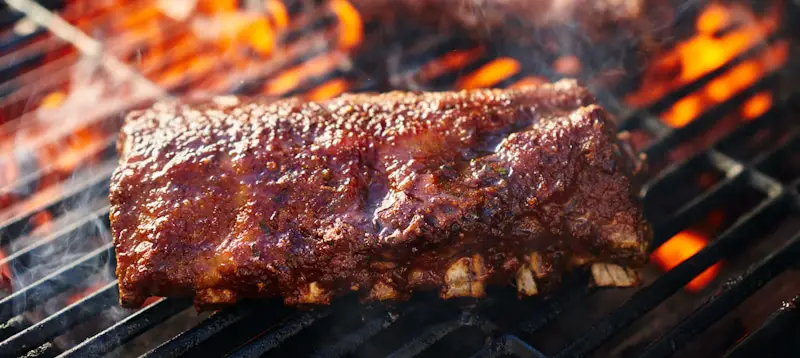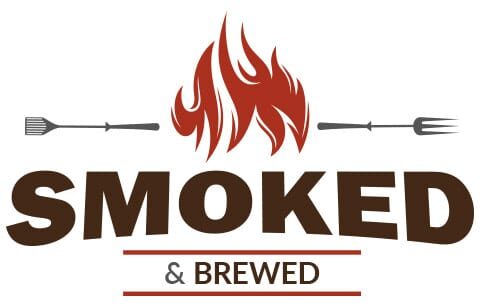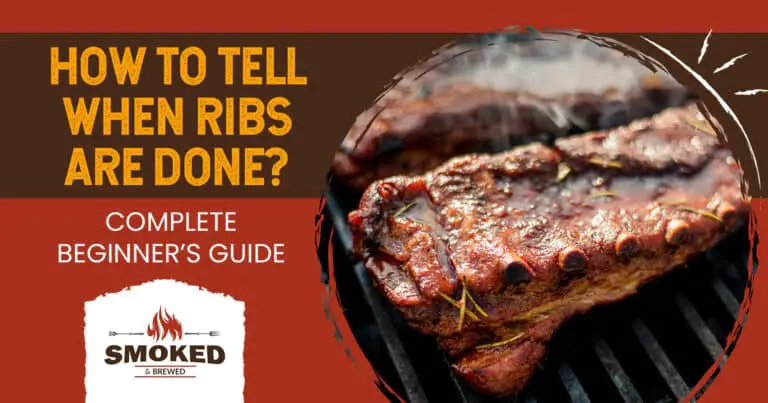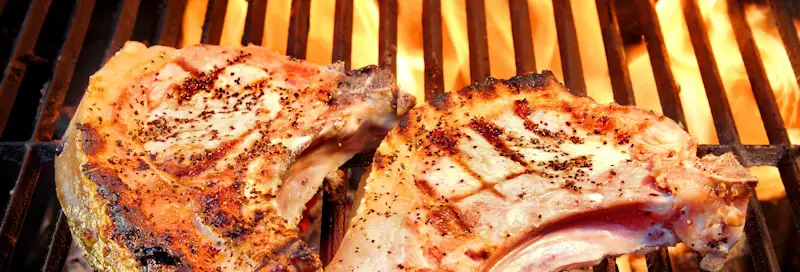Ribs are at their best when you cook them for a long time and at a low temperature. But how are you supposed to know “when are ribs done” and get them off the grill?
You can use different methods to tell when the ribs are done. Although using the digital meat thermometer is the most accurate and reliable way, the peek test, bend test, toothpick test, twist test, visual test, and taste test can be essential. Knowing the different methods to tell when the ribs are done is critical.
Knowing when ribs are done is essential to a delicious meal. Besides, undercooked ribs can have health implications on your health, which is why you need to ensure that you always get it right when determining the doneness of the ribs.

How To Tell When Ribs Are Done
A good chef will always want various ways to accomplish their objectives. In the same way, it is necessary to acquaint yourself with the several ways that you can tell when the ribs are done.
The Peek Test
The bones of the ribs can play a significant role in helping you determine when the ribs are done. If you look closely at the edges of the bone’s ribs, you will get the impression of whether or not the ribs are done. For instance, if you see some bones of the ribs exposed, that indicates that they could be ready for consumption.
The phenomenon in which about a quarter inch of the bone’s ribs are visible is called “pull back.” It can serve as a decent gauge for measuring the doneness of your meat.
The Timing Test
If you are a beginner, you will likely appreciate this technique of gauging the doneness of your ribs. It may entail a bit of calculation.
For instance, if you set your smoker or grill to 225 degrees Fahrenheit, you will need to cook your baby back ribs for about 3-4 hours, depending on the quantity. When smoking St. Style ribs or spare ribs, set the smoker to 5-6 hours.
If you adopt the time test, you will need to supplement it with a digital thermometer to ensure that the ribs reach a safe temperature. Nonetheless, sticking to the time frames above will guarantee safe meat to eat.
The Bend Test
The bend test is one of the fastest ways that you can use to gauge the doneness of your ribs. It requires a bit of practice, and once you master it, you will never have to worry about getting it wrong.
When using the bend test, you need to grasp one of the rib racks using a pair of tongs. Gently bounce the ribs up and down while observing it. If they develop a middle crack, you can interpret that to indicate the rib’s doneness. However, if the crack starts to show, that might indicate that you must continue cooking the ribs a little longer.
The Toothpick Test
The toothpick test is a standard method that you can use to gauge the doneness of meat. Even if you do not want to cause any damage to your ribs, you will have nothing to worry about because toothpicks will not cause visible damage to the ribs.
To use a toothpick to test for the doneness of the ribs, you need to take the toothpick and insert it between two bones of the rack. If the ribs are well-cooked, you should expect very little resistance. Raw meat will be hard to penetrate with a toothpick.
Internal Temp Of Pork
You probably know that it is crucial to have a digital thermometer for smooth cooking. Although having a meat thermometer is necessary, it will be of no use if you are not familiar with the internal temp of pork.
According to USDA, the safe internal temp of pork should be 145 degrees Fahrenheit with extra three minutes of rest time. Rest time is significant because the temperature keeps rising after removing the pork from the grill. At 145 degrees Fahrenheit, you can be sure that the meat will be safe, juicy, and tender.
If you have always known that the recommended internal temperature of cooked pork is 160 degrees Fahrenheit, you may want to consider reversing it. USDA revised the temperature from 160 degrees Fahrenheit to 145 degrees Fahrenheit. You are probably wondering why the change was necessary. There are two main reasons to explain this change;
- The 145 degrees Fahrenheit with an additional resting time of three minutes is enough to make the pork safe for consumption. This is the same as the 160 degrees Fahrenheit initially recommended for pork.
- The new temperature standard the agency uses for other meat products.
- Having a standard temperature for all meat products can help consumers to remember the safe temperature to eat meat.
The Right Temp For Pork Ribs
The safe temp for pork ribs is 145 degrees Fahrenheit. However, if you want the collagen inside the ribs to convert to gelatin for a delicious bite, you must keep smoking them. The conversion of the collagen to gelatin starts with the ribs attaining an internal temperature of 165 degrees Fahrenheit. For maximum renders, you can let the pork attain an internal temperature of 195 -203 degrees Fahrenheit.
Undercooked Ribs
When smoking or grilling pork, one of the objectives that you should have is to ensure that the pork attains a safe internal temperature of 145 degrees Fahrenheit. This is imperative because undercooked ribs can have food poisoning bacteria that can see you develop health complications after consuming the meat.
Some of the symptoms that you may experience after consuming undercooked ribs may include the following;
- Pain
- Digestive problems
- Unexplained count loss
- Blockage of the intestine and many others
Fortunately, you have no excuse to consume undercooked ribs as there are several ways, such as a meat thermometer, toothpick test, bend test, and many others, that can assist you in gauging the doneness of the meat.
Tips To Smoke Delicious Ribs
The taste of the ribs depends on your grilling skills. If you get everything right, you can be sure that you will have delicious ribs. Here are some crucial tips you may want to incorporate into your grilling process.
- The first step is to ensure that you have quality ribs. However experienced you are, if you do not have quality meat at your disposal, the chances are that you will not achieve the best results.
- Remove the rib membrane – most people ignore the membrane on the back of the rib. Removing the membrane allows the meat to absorb the seasoning and brine for flavorful meat. This is because the membrane is not as porous as the rest of the meat and may prevent the meat from taking in the seasoning.
- Ensure that you use the best dry rib for a delicious meal. Coat the trimmed ribs with the dry rub of your choice generously.
- Use high-quality woods – If you are smoking the ribs, it is vital to ensure that you are using quality and pure wood. The wood that you will use will have a direct impact on the flavor of the smoked meat.
- When the ribs are done, let them rest for about 10 minutes. The resting period ensures that the juices are reabsorbed back into the ribs before you can proceed to serve.
Conclusion
Grilling ribs to perfection is not as complex a task as anyone can easily do. One of the essentials you will need to execute a smooth smoking task is to be able to tell “when are ribs done.”
Fortunately, several methods can help you gauge the doneness of your ribs. The Peek-A-Boo Test, bend test, flexibility test, toothpick test, time test, and digital temperature are some of the best methods that can help gauge the doneness of meat. With any of the above methods, you should be able to tell when your ribs are done.
Scot has loved smoking food in his free time for the last few years. Each major holiday or off-weekend, Scot spends days testing and prepping new recipes for perfection.


